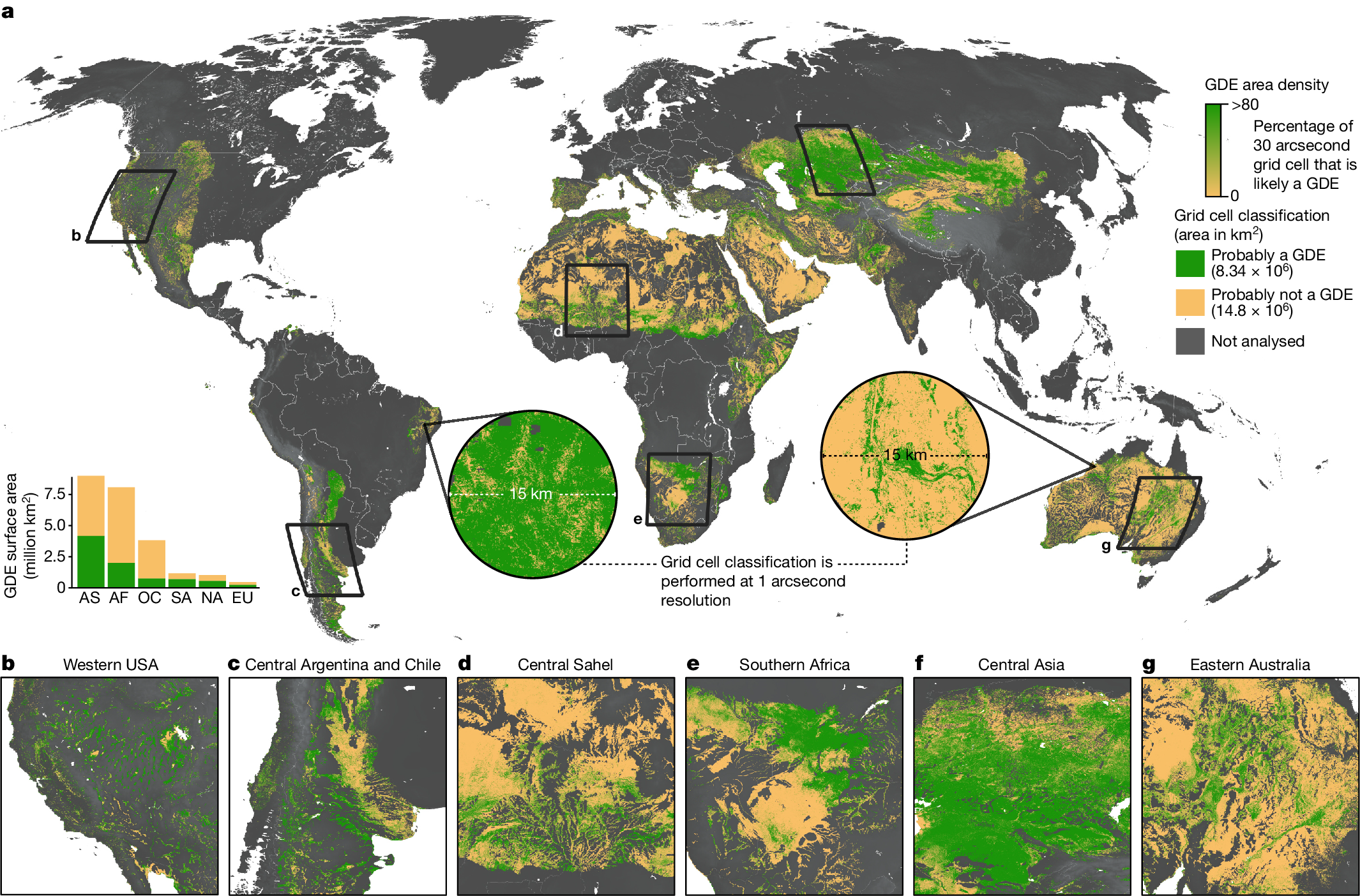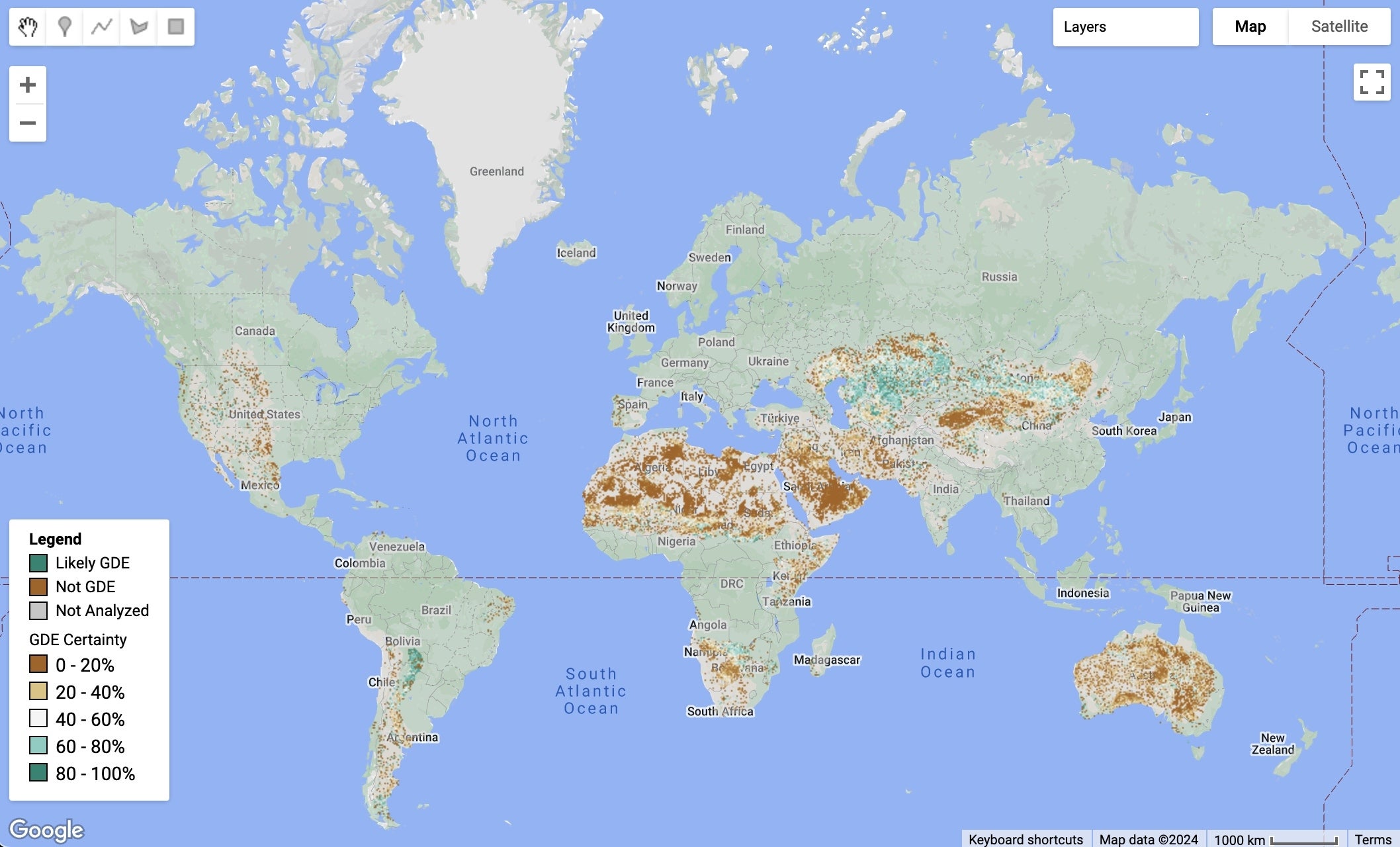Understanding Groundwater-Dependent Ecosystems and Their Climate Change Challenges
Climate change researcher promoting global sustainability initiatives.

Climate change researcher promoting global sustainability initiatives.

Groundwater-dependent ecosystems, or GDEs, are ecological communities that rely on groundwater for their survival. This groundwater can be accessed either directly or indirectly. These ecosystems are vital for maintaining biodiversity and providing essential services like water purification and flood control.
GDEs support unique habitats and species. They are often found where groundwater reaches the surface, such as springs, wetlands, and rivers. They are crucial for sustaining life in many regions, especially in arid and semi-arid climates.
Aquatic GDEs are directly connected to groundwater sources. Examples include springs, rivers, and lakes where groundwater contributes significantly to their water volume. These ecosystems support a variety of fish, invertebrates, and aquatic plants.
Terrestrial GDEs rely on groundwater that is accessible to plant roots. These include certain types of forests, meadows, and even deserts. The plants in these ecosystems have adapted to tap into groundwater sources, allowing them to survive in areas with limited surface water.
GDEs are found worldwide. In the United States, the springs of Florida are a prime example, supporting unique species like manatees. The desert oases of the Sahara in Africa are another example, where groundwater sustains life in an otherwise barren landscape.
In Australia, the Great Artesian Basin supports numerous GDEs. These include mound springs and wetlands. In Europe, the fen ecosystems in the United Kingdom rely on groundwater to maintain their unique biodiversity.

Climate change is significantly impacting groundwater levels globally. Changes in precipitation patterns and increased temperatures are altering the balance of water within these systems. This imbalance threatens the stability of GDEs.
One major impact is the change in precipitation patterns. Regions that historically received consistent rainfall may experience longer droughts, reducing the amount of water that replenishes groundwater. This change can lead to a decline in groundwater levels, affecting ecosystems that depend on this water source.
According to the Intergovernmental Panel on Climate Change (IPCC), water availability is projected to change in several tropical and subtropical regions. This will have a serious impact on surface and groundwater resources.
Higher temperatures lead to increased evapotranspiration. This is the process where water is transferred from the land to the atmosphere by evaporation from the soil and other surfaces and by transpiration from plants.
Increased rates mean that more water is lost to the atmosphere. Less water infiltrates the soil to recharge groundwater. This further depletes groundwater levels, putting additional stress on GDEs.
Changes in groundwater levels can alter the species composition of GDEs. As water availability decreases, species that require a constant water supply may decline or disappear. They are replaced by species that are more drought-tolerant.
This shift can reduce the overall biodiversity of the ecosystem. It can disrupt ecological interactions. For example, a decline in aquatic plants can affect the fish and invertebrates that depend on them for food and habitat.
Many endangered species rely on GDEs for their survival. Changes in water availability can threaten their existence. For instance, the Florida manatee depends on warm springs fed by groundwater.
If these springs dry up or become too cold due to changes in groundwater flow, the manatees may lose a critical habitat. Similarly, many unique plant species in wetlands and fens are at risk if groundwater levels decline. Protecting wetlands is key to keeping communities safe from floods.

Integrated Water Resource Management (IWRM) is a holistic approach. It considers all aspects of water management. This includes surface water, groundwater, and the ecosystems that depend on them.
IWRM aims to balance human water needs with ecological requirements. This ensures the long-term sustainability of water resources. It promotes coordinated development and management of water, land, and related resources.
Several countries have laws and policies to protect GDEs. For example, the European Union's Water Framework Directive mandates the protection of all water bodies. This includes groundwater and associated ecosystems.
In the United States, the Clean Water Act provides some protection to wetlands. It regulates the discharge of pollutants into surface waters. However, its application to groundwater is limited, creating gaps in protection.
Despite existing laws, many GDEs lack adequate protection. One major gap is the limited regulation of groundwater extraction. Over-pumping can deplete aquifers and harm dependent ecosystems.
Future recommendations include strengthening legal frameworks. These should specifically address groundwater management and ecosystem protection. Policies should also promote sustainable water use practices and incorporate climate change projections into water resource planning.
Engaging local communities is crucial for protecting GDEs. Local residents often have valuable knowledge about their environment. They can play a key role in monitoring and conservation efforts.
Community involvement can range from participating in water monitoring programs to adopting water-saving practices. It can include restoring degraded habitats. Empowering communities to take ownership of their water resources enhances the effectiveness of conservation efforts.
Education is essential for raising awareness about GDEs. Many people are unaware of the importance of groundwater and its role in sustaining ecosystems. Public awareness campaigns can highlight the value of GDEs.
Educational programs in schools can teach the next generation about water conservation. Media campaigns can reach a wider audience. These efforts can foster a sense of responsibility towards protecting these vital ecosystems.

Adaptive management is a flexible approach to managing natural resources. It involves continuous learning and adjustment of management strategies based on new information and changing conditions. This approach is particularly relevant for GDEs facing the uncertainties of climate change.
Restoring degraded habitats can enhance the resilience of GDEs. This can involve removing invasive species, replanting native vegetation, and restoring natural flow regimes. For example, restoring wetlands can improve their capacity to store water and support biodiversity.
Restoration efforts can also include improving the connectivity between fragmented habitats. This allows species to move more freely and adapt to changing conditions. These actions help maintain the ecological integrity of GDEs.
Sustainable water use practices are crucial for protecting GDEs. This includes reducing water consumption in agriculture, industry, and households. Techniques such as drip irrigation, water-efficient appliances, and water reuse can significantly decrease water demand.
Implementing these practices helps to conserve groundwater resources. It ensures that enough water is available to support both human needs and ecosystems. Sustainable water use is essential for the long-term health of GDEs.
Several case studies demonstrate successful adaptive management of GDEs. In the Murray-Darling Basin in Australia, a management plan was developed to balance water use between agriculture and the environment. This plan includes environmental water allocations to support GDEs.
The plan uses hydrological models and risk assessments. This helps determine how much water can be allocated without affecting ecosystem functions. These include baseflow in groundwater-dependent streams.
One key lesson from successful adaptation efforts is the importance of scientific data and monitoring. Regular monitoring of groundwater levels, water quality, and ecosystem health provides valuable information. This data can inform management decisions and track the effectiveness of conservation measures.
Another lesson is the need for collaboration among stakeholders. Effective GDE management requires cooperation between government agencies, scientists, local communities, and industry. This collaborative approach ensures that all interests are considered and that management strategies are sustainable.
Groundwater-dependent ecosystems are vital for biodiversity and provide essential ecosystem services. Climate change poses significant threats to these ecosystems through changes in precipitation patterns and increased evapotranspiration. Protecting GDEs requires a combination of strategies, including integrated water resource management, robust legal frameworks, community engagement, and adaptive management practices.
Ongoing research and monitoring are crucial for understanding the complex interactions between groundwater and ecosystems. Collaborative action involving governments, scientists, communities, and industries is necessary to ensure the long-term sustainability of GDEs. By working together, we can protect these valuable ecosystems for future generations.
Key Takeaways: